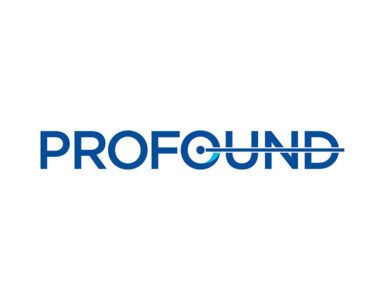After nearly a decade of R&D, Profound Medical (OTCQX:PRFMF; TSXV:PRN) is now conducting a pilot launch of its TULSA-PRO medical device to ablate tissue in localized prostate cancer within key European and other CE Mark jurisdictions ahead of full commercialization.
The first focal therapy with TULSA-PRO was successfully conducted at the ALTA Klinik in Bielefeld, Germany last week under the supervision of Dr. Agron Lumiani, a leading German radiologist and an early adopter of the use of MRI for prostate diseases imaging and biopsy.
Arun Menawat, CEO of Profound Medical, describes the pilot program as a great step forward in the journey to commercialize the TULSA-PRO system within Europe, and in building awareness about the technology as an attractive clinical option for patients with localized prostate cancer.
“We also believe it will act as a strong catalyst for further adoption of the therapy as we continue our penetration into other European and international markets,” Dr. Menawat adds. “We look forward to continue working with Dr. Lumiani, to address the unmet needs of patients who suffer from this disease.”
The TULSA-PRO system is an innovative, minimally invasive way to ablate tissue in patients with localized prostate cancer.
The system uses MRI to carefully map out the unique shape of a patient’s prostate and plan the treatment best suited for their needs. The TULSA-PRO procedure then uses MRI guided, robotically-driven, therapeutic ultrasound, with real-time thermal feedback to accurately and precisely ablate the prostate tissue, all while preserving surrounding healthy tissue.
The same-day TULSA procedure is precise, accurate and offers low rates of serious or long-term adverse effects.
Profound is also sponsoring a multicenter, prospective FDA-registered clinical trial, TACT, which is designed to further demonstrate the safety and effectiveness of its technology. If successful, TACT is expected to support Profound’s application to the FDA for approval to market TULSA-PRO in the U.S.
To support the rollout, the company has established strategic partnership/collaborations with two global medical device developers – Royal Philips and Siemens Healthcare.
In addition to ensuring compatibility of TULSA-PRO with their MRI platforms, Philips and Siemens are collaborating on the capital unit placements as well as joint marketing activities. Profound has publicly announced the sale of four commercial units.
Dr. Lumiani has been working with MRI technology since 1984 and founded the ALTA Klinik 11 years ago to focus on MRI diagnostics for prostate diseases. Since then, his clinic has performed more than 6,000 MRI examinations of the prostate.
“Our patients come from all over Germany and neighboring countries,” Dr. Lumiani says in an interview with BioTuesdays. “MRI examination of the prostate has become increasingly important for urologists.
MRI diagnostics, as a primary diagnostics, form the basis for detecting prostate cancer, even at an early stage. “MRI-guided and targeted prostate biopsy enables superior diagnostic clarity for prostate cancer, as it can ensure that the biopsy material comes directly from the suspected lesions,” he points out.
The TULSA-PRO system is an innovative, minimally invasive way to ablate tissue in patients with localized prostate cancer.
“Although our biopsy method is MRI-guided and targeted, we also take out systematic tissue samples to give the patient maximum certainty in the result,” he adds. “The result of the biopsy helps the urologist to define the individualized treatment for each patient.”
Dr. Lumiani recalls that in 2009, his clinic developed a MRI-guided, targeted transgluteal transforaminal prostate biopsy. “It was important for me to find a way to access the prostate that did not involve going through the rectum, since that route leads to intestinal bacteria reaching the prostate, which requires a patient to take prophylactic antibiotics.”
The transgluteal transforaminal path to the prostate is ideal because access is sterile and painless, and enables reaching all suspicious lesions in the prostate, he adds. Ultimately, the rectum is left untouched, and other organs are not injured as a result.
Dr. Lumiani also has had positive results with transrectal HIFU (high-intensity focused ultrasound) as a focal treatment for the prostate.
But he contends that the advantages of the TULSA-PRO procedure are that it is done transurethrally, and that each localized tumor can be treated. The procedure is performed under constant real-time MR imaging, so that heat generation is accurately monitored throughout the entire treatment.
“With the TULSA-PRO, we preserve the rectal wall and the neurovascular bundle, and provide intra-urethral cooling which ensures the preservation of the urethral wall,” Dr. Lumiani explains. As a result, a patient’s anatomical structures and their functions, which run through the prostate, can be preserved.
Dr. Lumiani uses TUSLA-PRO for focal therapy of localized prostate cancer and for other diseases of the prostate.
“As a radiologist who has seen the advantages of MRI diagnostics for over 30 years, it is a great medical advancement to be able to offer our patients an MRI-guided prostate treatment,” he contends. “These prostate treatments are monitored by MRI the entire time. That means that the whole procedure, from the examination, to the biopsy, and straight to the treatment are MRI-guided in our clinic.”
In the future, Dr. Lumiani suggests that the radiologist and the urologist will work in closer collaboration. The radiologist provides the attending urologist with the diagnostic findings of the prostate, and the urologist then decides on how to proceed. Fusion biopsy, which is based on MRI diagnostics, will certainly be used more often in the future as well.
“Optimized MRI diagnostics, and the application of these methods, enables prostate tumors to be detected more often, and at the earlier stages than in the past,” he says.
“Overall, a greater number of patients receive maximum diagnostic certainty and their treatments can be customized precisely to their own needs, ensuring the best possible outcomes.”







